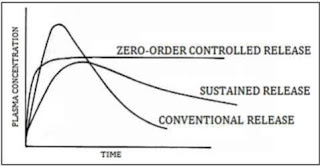Advantages and Disadvantages of Liquid Dosage Forms
Liquid dosage forms are pourable pharmaceutical preparations which contain a mixture of drug substance and excipients dissolved or suspended in a suitable solvent or mixtures of solvents. They are designed to provide the maximum therapeutic response in patients who have problem of swallowing solid dosage forms and/or to produce rapid therapeutic effects.
Liquid’s
dosage forms can be solutions or dispersions. Pharmaceutical solutions are
clear, homogeneous, and single-phase systems containing one or more drug
substances dissolved in one or more solvents, while liquid dispersions can be
two-phase or multiphase systems, composed of one phase dispersed through
another phase(s). The dispersed phase can be composed of solid particles (suspensions),
oil droplets
(emulsions), micelles (surfactant solutions), and lipid vesicles (liposomes).
Liquid
dosage forms can be administered by oral and parenteral (injectable,
inhalation, ophthalmic, optic, nasal, and topical) routes.
This
article focuses on the advantages and disadvantages of liquid dosage forms
Advantages of liquid dosage forms
1. Liquid dosage
forms (for oral use) are the most suitable dosage form for patients who have
difficulty taking tablets or capsules, as might be the case with pediatric or
geriatric patients.
2. They are
attractive in appearance and gives beneficial psychological effects.
3. Drugs with
bitter and unpleasant taste can be given in sweetened, colored and flavored
vehicles.
4. There is higher
flexibility in dosing when compared to solid dosage forms like tablet and
capsules. The dose of the drug substance can be easily and conveniently
adjusted by measuring a different volume.
5. If given orally,
liquid dosage forms are rapidly available for absorption than tablets and
capsules.
6. Hygroscopic and
deliquescent medicaments which are not suitably dispensed in solid dosage forms
can easily be given in liquid dosage form.
7. The products
like adsorbents and antacids are more effective in liquid dosage form.
8. The liquid
dosage form is expected for certain types of products like cough medicaments
Disadvantages of liquid dosage forms
1. Liquid dosage
forms are usually more susceptible to chemical degradation when compared to
solid dosage forms.
2. They are bulky
and therefore inconvenient to transport and store.
3. Accidental
breakage of the container results in loss of whole dosage form.
4. The shelf-life
of a liquid dosage form is often much shorter than that of the corresponding
solid preparation due to low stability.
5. Solution often
provides suitable media for microbial growth and may, therefore, require the
incorporation of a preservative.
6. Liquid dosage
forms e.g., vaccines may require special storage conditions
7. The taste of a
drug which is usually unpleasant is always more prominent when in solution than
in a solid form.
8. There is a
higher chance of dose variability since the delivery of the dose depends upon
the patient measuring the proper volume. This can be significant issue for
vision-impaired patients, patients with arthritis, or patients unable to read
the numbers on an oral dosing syringe or medicine cup.




Very much helpful.. Thanks
ReplyDelete